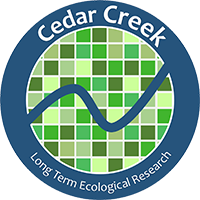Human activities are altering Earth’s ecosystems and creating unprecedented combinations of climate, carbon dioxide concentrations in the atmosphere, supplies of limiting nutrients like phosphorus and nitrogen, and rates of disturbances such as fire. At the same time, humans are increasing the rate of species extinctions and the spread of invasive species, including pests and pathogens.
Overarching Guiding Question
How do multiple environmental change drivers (climate, resources, disturbance, and biodiversity) interact to affect the attributes and processes of ecological systems across hierarchical scales (organism, population, community, and ecosystem) over spatial scales that encompass ecological heterogeneity and temporal scales that encompass biotic interactions and feedbacks?
The overall goal of CDR LTER is to use long-term observations and experiments, theory, and models to achieve a mechanistic and predictive understanding of (1) how ecological systems will respond to interacting human-driven environmental changes at multiple biological, spatial, and temporal scales and (2) how ecological responses feed back to moderate or amplify environmental changes and alter the ecosystem services that support human well-being. To accomplish this, we integrate long-term observational and experimental data with a range of analytical, simulation, and data-driven modeling approaches.
Researchers at the Cedar Creek Long Term Ecological Research Program (CDR LTER) are using mathematical models and long-term data from grasslands, savannas, and forests to understand and forecast how these interacting human-driven environmental changes will alter Earth’s ecosystems and the ability of ecosystems to provide the services that support human well-being. This work builds on the CDR hallmark of combining data from long-term experiments and observations to explore the interactive effects of changes in resources (nutrients, atmospheric carbon dioxide), climate (temperature, precipitation), biodiversity, and disturbance (fire, land use change) on linked ecological processes at local to global scales.

